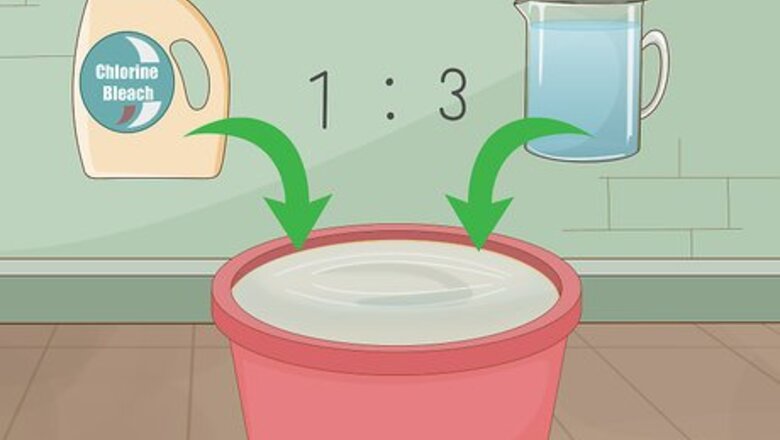
views
Removing Mold from Finished Walls
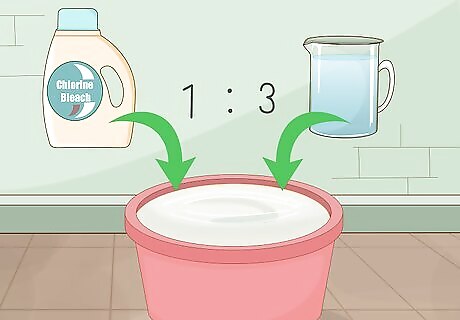
Combine chlorine bleach and water in a large bucket. Your mixture should be 3 parts water to 1 part bleach. Pour the bleach into the bucket while you’re adding your water to ensure that the solution mixes evenly. Avoid spills by pouring your liquids slowly. While working with bleach, make sure you wear rubber gloves, protective eyewear, and a dust mask or respirator, since bleach tends to cause irritation to the lungs.
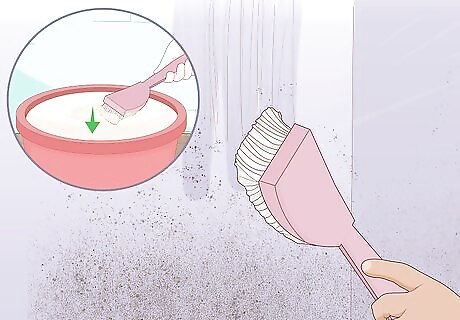
Dip a brush in the bleach solution and scrub the walls with it. You’ll want your brush to have hard, durable bristles. Begin scrubbing the mold by applying heavy pressure in a circular motion. Continue scrubbing until the mold stains are visibly gone. Tile joint brushes and hand brushes make excellent choices for mold removal. If you’re not getting results, let the bleach soak into the wall for several minutes before trying to scrub.
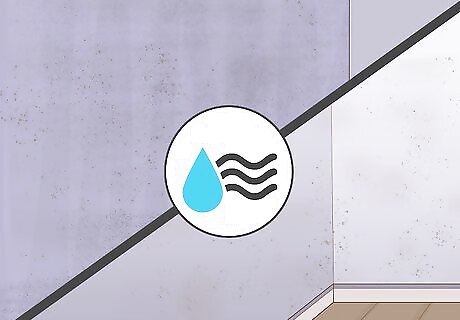
Leave your wall alone and let it air dry. You should try to maximize the amount of time your wall is in contact with the bleach, which means you’ll want to let you wall rest for a while. If the wall is excessively wet, soak up some of the excess water and bleach with a disposable rag. It may be several hours before your wall completely dries. It all depends on the humidity and temperature, both indoors and outdoors.
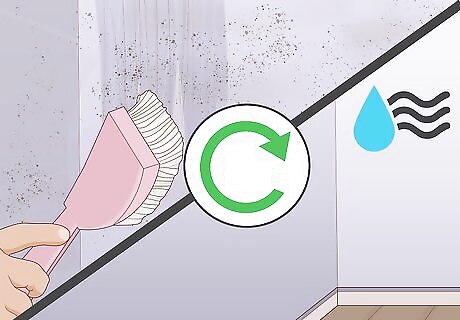
Repeat the cleaning process until all stains are completely gone. It may take multiple applications of bleach and water to fully remove the mold. Your wall is not entirely free of mold until all visible stains and signs of the mold have completely disappeared. If you cannot remove the mold after several applications of bleach and water, consider replacing the moldy section of your wall.
Getting Mold off of Wooden Walls
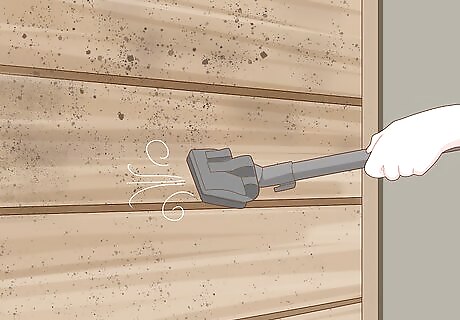
Vacuum the moldy wood to remove loose spores. Use a vacuum hose or handheld vacuum and turn it on the highest setting. Put your vacuum directly on the wood and run it across the moldy wood by moving it back and forth. Do this for several minutes in order to remove any loose mold spores that aren’t settled into the wood yet. While vacuuming your wood, make sure that you wear rubber gloves, protective goggles, and long sleeves and pants. Wear your dust mask or respirator as well, since the loose spores could travel into your lungs.
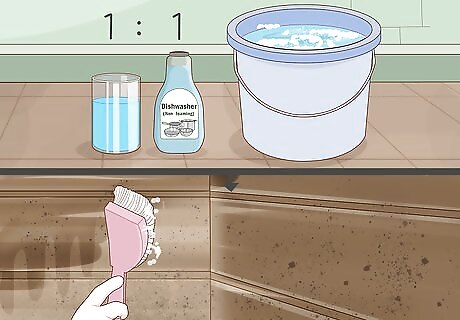
Apply soap and water to painted or finished wood. Fill a bucket with 1 part warm water and 1 part dishwashing detergent. Dip your soft-bristled scrub brush into the bucket and begin to gently scrub the wood. You should see the wood visibly begin to clear after several scrubs. Continue to scrub your wood until the mold is completely gone. If there’s still mold on the wood after you’ve scrubbed it, repeat the process with vinegar instead of warm water and dishwashing detergent. Don’t scrub too hard or you’ll risk removing the wood’s paint or sealant. You can use an ammonia-free soap instead of dishwashing detergent if you prefer.
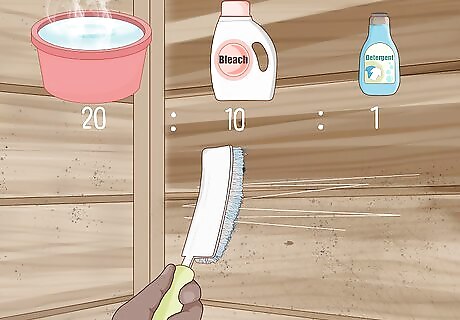
Use bleach to remove mold from raw and unfinished wood. If the wood is unfinished or penetrated by the mold, you need to create a stronger cleaning solution. Fill a bucket with 1 part detergent, 10 parts bleach, and 20 parts warm water. Scrub the unfinished or penetrated wood with a scrub sponge or stiff brush and allow it to air dry.
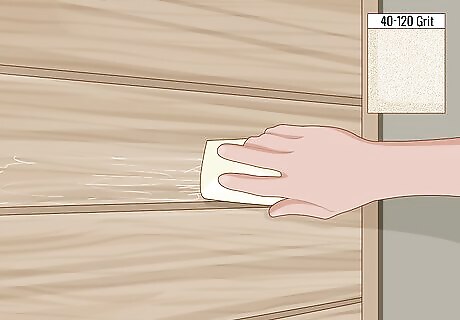
Sand the affected area to remove mold residue if necessary. If there’s still mold after you’ve scrubbed with detergent, soap, water, and bleach, you’ll likely need to sand the wood to remove the layer of mold. Use a piece of sandpaper and rub it into the wood in short, aggressive circular motions. Apply heavy pressure while scraping your wood. After the mold is visibly gone, reseal your wood with paint or sealant. 40-150 grit sandpaper is a good starting point for the sanding process, since you need to remove an entire layer of wood to remove all of the mold. You’ll get sawdust everywhere when sanding your wood, so put down a towel or tarp for a quicker clean up!
Removing Mold from Tiles and Grout
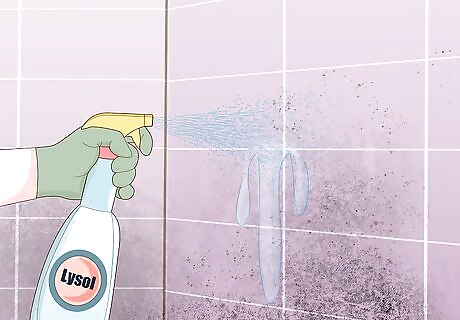
Spray your tiles with a household cleaner to remove soap scum and mold spores. To start, liberally spray your tiled wall with a tile-safe household cleaning product, like CLR or Lysol. This will weaken any thicker layers of mold and also remove any oil or soap residue to make cleaning easier. You won’t be able to reach the deeper layers of mold in your wall until these thicker layers of mold and dirt are removed first. While using household cleaners, wear rubber gloves, protective eyewear, a dust mask or respirator, and heavy clothing. Many household cleaners are skin irritants, and you’ll want to avoid coming into contact with them.
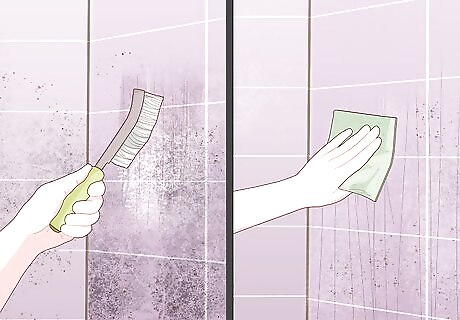
Scrub the tile with a standard scrub brush and wipe it dry with a rag or towel. You can use a standard scrub brush, or a thicker bristled-brush if you’d like. Scrub aggressively in a circular motion to ensure that you’ve covered every section of your tile at least twice. Wipe away the excess cleaning solution with a dry towel or rag.
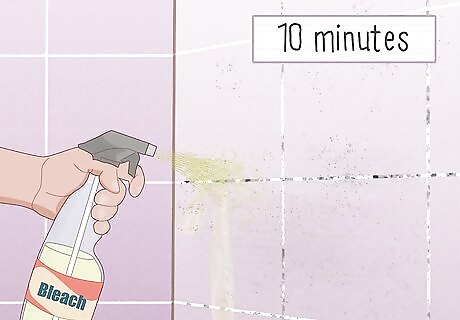
Spray your tiles and grout with bleach to remove the stains. You’ll likely have a layer of moldy residue staining the grout between your tiles. Fill an empty spray bottle with bleach and liberally coat the affected area. Let the bleach soak for 10 minutes, and lightly scrub your tile with a scrubbing brush. Wash the tiles with water to remove any excess cleaning material. You can use hydrogen peroxide if you don’t have any bleach. Spot test bleach on any ceramic tile by applying a small amount to a discrete area. Some tiles will be discolored by bleach, so you want to be careful.
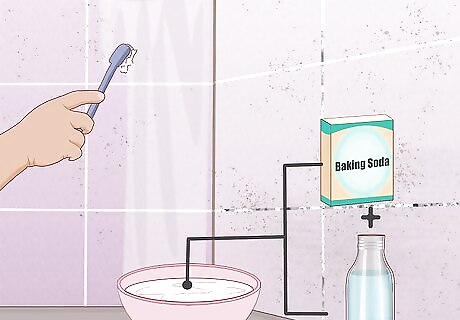
Create a baking soda paste if you still have stains. If the bleach and soap were ineffective, fill a large bowl with baking soda. Add a small amount of water and mix it in your bowl to create a thick paste. Apply the paste to the stained area with a toothbrush and scrub. If you still can’t get the mold out, it’s possible that you may have to replace the grout altogether.
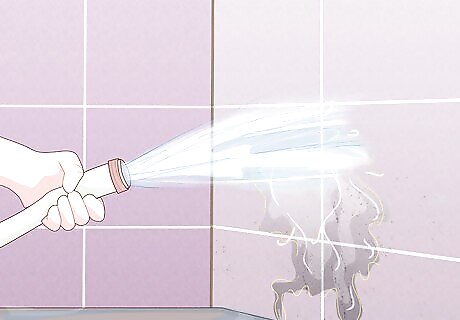
Rinse the area with cold water and let it air dry. You should wash away any excess cleaning materials by rinsing your tile wall with cold water. You can wash your tile by taking a wet cloth and lightly wiping the entire area. Lay down a towel or tarp to avoid getting your floor wet. Let your wall air dry.




















Comments
0 comment